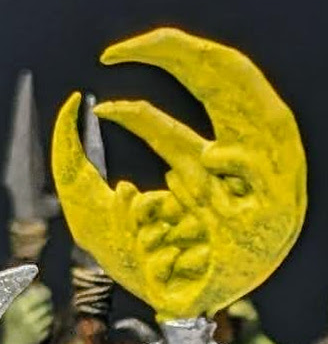- cross-posted to:
- technews@radiation.party
- news@kbin.social

So wait, J&J have already put aside 9 billion dollars for potential liability for the talc baby powder cancer claims and have stopped selling talc baby powder in North America, but yet they are suing researchers who made the issue known and constantly parroting that they aren’t admitting any wrongdoing. Nice.

I’m sure this won’t have any chilling effects amongst the researchers who keep us all safe.
Edit to add that Johnson & Johnson is/was also trying to use patent loopholes to make sure poor people die from tuberculosis; until the internet got mad.

The secondary patent particularly irked some advocates because the drug’s development was largely underwritten by public funds, according to a 2020 analysis. That study found public sector funds contributed $455 million to $747 million to getting bedaquiline to market, compared to $90 million to $240 million from J&J.
We pay for the development of the drug, they get the patent, then we pay for the drug. Socialize cost, privatize profits.

most of the hype about danger from talcum powder is quite fake. the link between cancer and the powder is hugely tenuous and the researchers are quite shameful. Poor J&J are being victimised when there are millions sufferring from the absence of their valuable and safe talcum powder,

We desperately, above all other issues, need to resolve the fact that big companies can win in court simply by paying until the other guy can’t afford to keep dealing with the legal system.

LTL said the researchers concealed the fact that some or all of the patients involved in their studies had been exposed to asbestos from other sources.
If that’s true, it doesn’t look good for the researchers.
But at the same time, J&J has to hold some responsibility for having their “asbestos-contaminated consumer talc products” on store shelves!

On the one hand sure, that’s an issue. On the other hand, who hasn’t been in contact with asbestos in one way or the other. Asbestos has been banned for many use cases but it is still widely in circulation. It’s a bit like asking for people who have never been exposed to smoking.

And it should be pretty easy to get a group of people with same level of asbestos exposure who haven’t used J&J’s talc and compare the cancer % between the groups. That’s where J&J should be focusing if they knew they were in the right.
But surprise, this is probably just throwing everything to discredit science.

And it should be pretty easy to get a group of people with same level of asbestos exposure who haven’t used J&J’s talc and compare the cancer % between the groups. That’s where J&J should be focusing if they knew they were in the right.
Yes, that’s how I’d do it.
Perhaps researchers did do this, and found that there was no difference, but decided not to publish that.
Who knows? But it sounds like J&J is confident that they can prove that researchers were hiding facts, or else that’s an incredibly pointed accusation!

I say this as someone who hates corn starch based powder and goes out of his way to ensure his family jewels only receive the most succulent of asbestos/talc powders.
I hope J&J are right. But I am extremely skeptical. I also don’t like the chilling effect, as others have pointed out. Finally, they could be just trying to win in the court of public opinion. Never forget McDonalds hot coffee case.

My old school had it in the walls, my father’s workshop had it in the rooftop, in the chimney insulation, etc. I’m pretty sure I haven’t been in danger as I haven’t built or torn anything of those down, but I for sure have been in contact.

It really depends on the type of study it was, and what these sources of asbestos were supposed to have been.
If they were doing a comparison study, so long as the control group was exposed to asbestos in similar amounts and in similar environments, it’s still a strong finding. J&J shouting “they were exposed to other asbestos!” would just be an empty attack on the researchers’ characters, and an attempt to falsely discredit them to an uncritical and uneducated public.
Things do seem to be a bit more complicated than that, though, as these are post-hoc investigations with no control. That said, it looks like they tried to do their due diligence to filter out participants who had known environmental exposure to asbestos. If some of them lied or mis-remembered, then it’s up to J&J to show that the researchers were negligent or operating in bad faith.
That’s going to be a pretty big hurdle to climb. I don’t believe they actually intend to climb it.
The fact that the researchers asked about environmental during recruitment, plus the fact that J&J is only claiming that a small handful of people involved in the study were exposed to other sources of asbestos, really shows this for what it is: An attempt to scare researchers away from doing research, and especially from agreeing to be provide expert testimony in lawsuits.
One of the defendants here even has a new paper out this past January that includes patients with known environmental exposure to asbestos, and they show that cumulative exposure from all sources matters. Including exposure from talc:
Conclusion
For individuals with exposure to asbestos through cosmetic talc usage and additional alternate sources, all exposures contribute to the development of mesothelioma. Published case reports and case series have identified over 100 individuals whose sole exposure to asbestos was through cosmetic talcum powder usage.This finding basically cuts J&J’s apparent argument off at the knees, and was published months before they ever filed suit. They’d have been aware of it at the time of filing. They don’t seem to have anything here. Just the opportunity to try and make their detractors look as dirty as they are in the eyes of people who haven’t read any of the research.

The wording is that “researchers concealed”, which is what they need to prove.
Keep in mind, it was that same research that cost them billions of dollars and tens of thousands of lawsuits, so anything to invalidate the original papers is going to benefit them.
This finding basically cuts J&J’s apparent argument off at the knees
It might be quite the opposite! The study itself concludes that “for individuals with mixed exposures to asbestos, all exposures should be considered”.
If J&J is saying what I think they are saying, then the researchers made these products look more harmful than they were, and included people who would have been harmed by other exposure to asbestos but concealed that fact in the study.
Either way, J&J did a horrible thing by having asbestos-laden products in the market. I’m not on their side at all, but I also don’t like bad science, so the outcome of this lawsuit will interest me regardless of who wins.

It might be quite the opposite! The study itself concludes that “for individuals with mixed exposures to asbestos, all exposures should be considered”.
Yes, but the study still shows that people with no environmental exposure still got cancer. It’s still explicitly stating that talc exposure is asbestos exposure. If J&J’s argument is that these researchers made their product look more dangerous than it is by including people with environmental asbestos exposure in their studies – whether by accident, or for nefarious purposes – and therefore creating a false link between talc and cancer, this paper side-steps that issue entirely by including people with and without known exposure, and showing that talc exposure is equivalent to environmental exposure.
If J&J is saying what I think they are saying, then the researchers made these products look more harmful than they were, and included people who would have been harmed by other exposure to asbestos but concealed that fact in the study.
Proving that they concealed this information would be difficult, I think, though it would be devastating not only to their bank accounts, but to their careers more generally. Emory, Maddox, and Kradin’s study explicitly states:
One hundred forty subjects with documented exposures to cosmetic talc were initially reviewed. Exposures were identified through sworn deposition testimonies and answers to sworn interrogatories provided from subjects, parents, and spouses. Sixty-five subjects were excluded due to recalled occupational or paraoccupational exposures to other sources of asbestos.
So, that wouldn’t even be a lie of omission. It would be straight academic malpractice. Their academic careers would be over.

Yes, but the study still shows that people with no environmental exposure still got cancer.
There’s no denying that asbestos in talc products cause cancer, but the argument is “to what extent”?
For instance, why doesn’t the study have a control group (i.e. no talc and no other exposure to asbestos)? That would at least give some idea of the risks from using talc compared to no talc use.
The way the study is set up, it’s like comparing smokers who had a pack a day vs those who had 1.5 packs a day. Where are the non-smokers?
It seems that the loser in this case would come out severely damaged: on one hand, you’ve got shareholders and a possible countersuit for defamation, and on the other hand you have a career ending outcome. I would hate to be either party!

It’s true, the results are weaker than if they had done a comparison study, but a lot of medical research is just post-facto observation reports. Like, to do a proper double blind study here, you’d have to start with healthy people and then knowingly expose some of them to something you suspect may be a carcinogen.
That’s not going to pass the ethics board.
You can look at people who have already gotten cancer and try to lump them into those who have used talc-based products and those who haven’t, but then how do you actually measure the impact of the talc there? Do you look at the number of patients who did use talc-based products vs those who didn’t? Those might just reflect the rate at which those products are used among different subsets of the population.
The key bit here is that the kind of cancer they’re looking at – mesothelioma – is known to be caused by asbestos. It’s also known that talcum powder contains asbestos. So, the observational link here is seeing whether people with mesothelioma have had known significant exposure to environmental asbestos and how much exposure they’ve had to talc-based products. And if you can see in your observations that higher or more prolonged exposure to talc is correlated with increased mesothelioma rates, and can assume that these people – based on their own memories – have not been exposed to environmental asbestos at a rate higher than any other average person, then environmental exposure becomes an independent factor and you can assert the correlation between talc exposure and cancer rates.

It’s a pretty wild allegation. They would have to have known about the other sources of exposure and deliberately withheld that information. Even if the patients had had some other exposure, it’s even less likely that the doctors would have known about it, and their study will have been designed as well as practicable to find out.

That’s a SLAPP suit.

Ahh yes… amazing how they never short on money for these adventures

i’m sorry, they fucking what?


